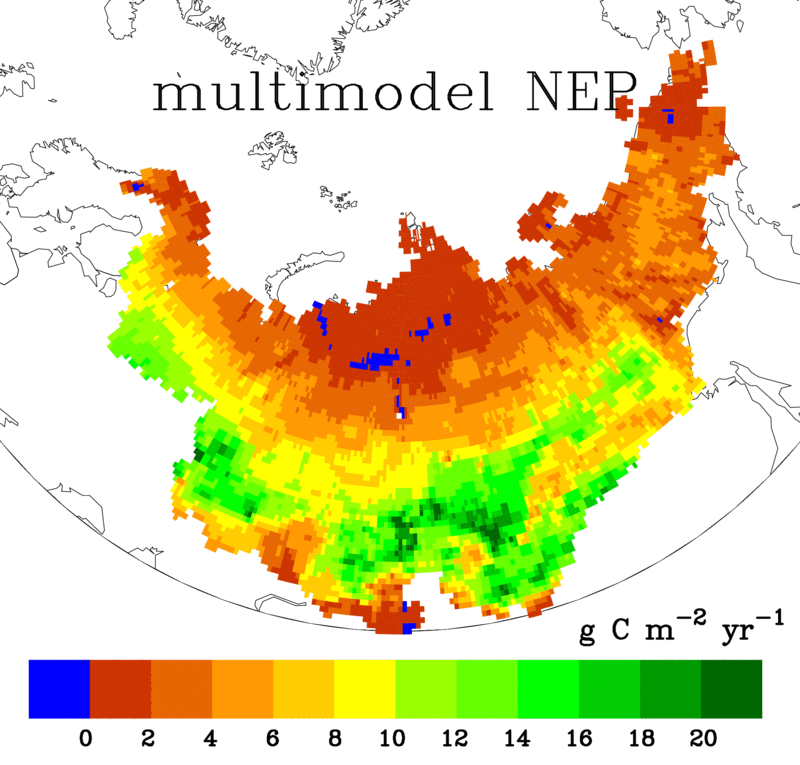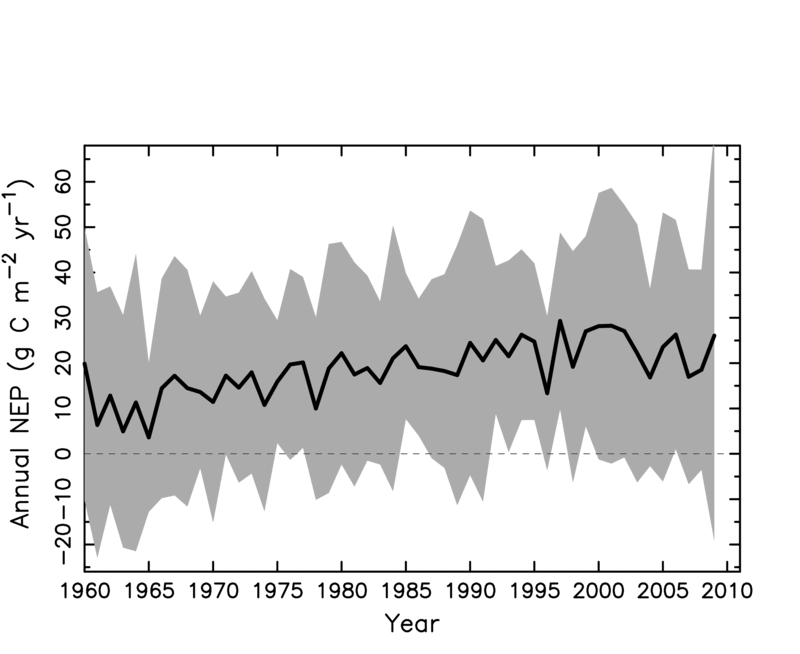 |
|

Curriculum Vitae
Research
Publications
Media Outreach
High northern latitude land areas are a large sink of atmospheric carbon dioxide (CO2). Warming and disturbances such as fire, insects, and human activities influence the sinks and sources of CO2. Recent research suggests the Arctic ecosystems may change from a sink to a source of carbon in coming decades. Results shown are from a study of the land-atmosphere exchange of CO2 using a set of earth system models. This research represents one element of a NASA funded project focused on understanding the carbon cycle of northern Eurasia through a synthesis of data and models.

Long-term average annual Net Ecosystem Productivity (NEP) as a multimodel average across northern Eurasia. NEP is the CO2 exchange between the land and atmosphere, estimated as the difference between gross primary production and ecosystem respiration. Areas in blue are a net source of CO2 to the atmosphere. The net sink across tundra areas is fairly small (2-4 grams of carbon per square meter each year).

Annual NEP as an average across nine earth system models over the period 1960-2009. The increasing net sink shows signs of weakening.